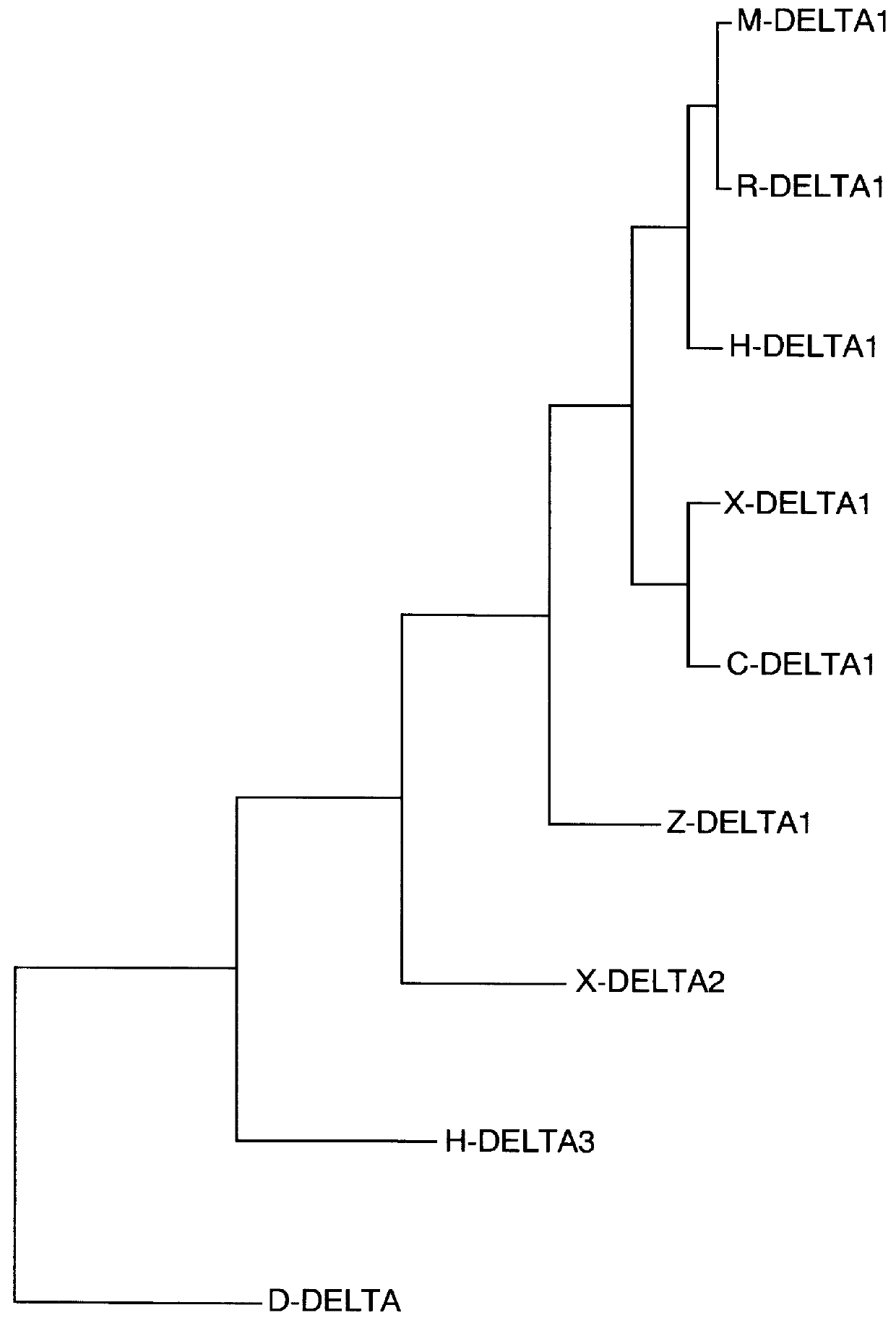Human Delta3 nucleic acid molecules
a nucleic acid and human technology, applied in the field of human delta3 nucleic acid molecules, can solve the problems of severe patterning defects in the paraxial mesoderm and hyperplastic central nervous system
- Summary
- Abstract
- Description
- Claims
- Application Information
AI Technical Summary
Benefits of technology
Problems solved by technology
Method used
Image
Examples
Embodiment Construction
1. General
The present invention is based at least in part on the discovery of a novel gene encoding a human Delta protein, referred to herein as "hDelta3 " polypeptide. An exemplary hDelta3 has been deposited under the Budapest Treaty with the American Type Culture Collection (ATCC) 10801 University Boulevard, Manassas Va. 20110-2209 on Mar. 5, 1997 and has been assigned ATCC accession number 98348. The human Delta3 gene maps to human chromosome 15.
FIG. 1 shows the DNA sequence of the human Delta3 gene including 5' and 3' noncoding sequences (SEQ ID No. 1), the coding sequence (SEQ ID No. 3), as well as the deduced amino acid sequence of the human Delta3 protein (SEQ ID No. 2).
Human Delta3 is expressed in endothelial cells and in fact was cloned from a human microvascular endothelial cell library. Northern blot analysis of RNA prepared from a number of different human tissues, indicate that a 3.5 kb Delta3 mRNA transcript is present in fetal brain, lung, liver and kidney, and adult ...
PUM
| Property | Measurement | Unit |
|---|---|---|
| Angle | aaaaa | aaaaa |
Abstract
Description
Claims
Application Information
 Login to View More
Login to View More - R&D
- Intellectual Property
- Life Sciences
- Materials
- Tech Scout
- Unparalleled Data Quality
- Higher Quality Content
- 60% Fewer Hallucinations
Browse by: Latest US Patents, China's latest patents, Technical Efficacy Thesaurus, Application Domain, Technology Topic, Popular Technical Reports.
© 2025 PatSnap. All rights reserved.Legal|Privacy policy|Modern Slavery Act Transparency Statement|Sitemap|About US| Contact US: help@patsnap.com

